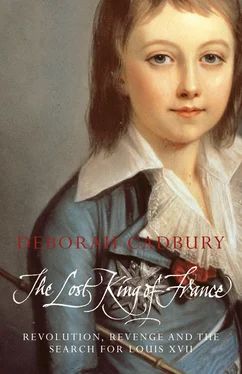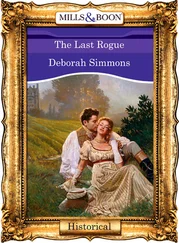1 ...7 8 9 11 12 13 ...20 When the Estates-General had last met 174 years previously, it had had an equal number of representatives from each estate, in which the First Estate, the clergy, and the Second Estate, the nobility, could always combine together to outvote the Third Estate, the commoners. When the restored parlement demanded the same arrangement this time, there was outrage and further riots. Louis decided to right this imbalance by giving the commoners as many representatives as the nobility and clergy together, but he neglected to say whether the voting would be by ‘order’ or by head. What had initially begun as a protest by the clergy and nobles against the powers of the king to raise their taxes had now set in motion a chain of events in which all sections in France sought to exert greater political power. Even the elements seemed ranged against Louis. A very bad harvest was followed in 1788 by a viciously cruel winter in which many of the poor died of cold or starvation. Unrest was growing; robber bands pillaged the countryside. To many ordinary people the whole system in France seemed rotten; feelings against the king and queen hardened as deeply felt grievances were aired.
As the debates raged about the Estates-General, Marie-Antoinette watched anxiously over the declining health of her eldest son. ‘The young Prince fell, in a few months, from rude health into a condition which curved his spine, distorted and lengthened his face, and rendered his legs so weak that he was unable to walk without being supported like some broken old man,’ wrote Madame Campan. Still only six years old, his little body slowly became pitifully deformed as his tuberculosis spread. ‘He has one leg shorter than the other, and his spine is twisted and sticks out unnaturally,’ the queen confided to her brother, Emperor Joseph II, in February 1788. The next month the Dauphin was sent to the Château de Meudon with his governor, in the hopes that his health would recover with the fresh country air. The king visited his son no less than forty times over the summer months, eagerly looking for any sign of improvement. There was none.
The queen took comfort from her other two children. Marie-Thérèse, the eldest, she nicknamed Mousseline la Sérieuse on account of her serious, thoughtful manner. The Petite Madame took after her father in temperament, although she could be dignified sometimes to the point of seeming haughty. The queen reserved her strongest endearments for her youngest, Louis-Charles: ‘ mon chou d’amour ’. His blue eyes and blond hair resembled his mother’s and with his affectionate and playful personality he proved a most rewarding child. He enjoyed games of ‘wedding’ in the nursery with his friends and playing with sand or horses – his great aunts had given him eight small black ponies, which had been specially trained so he could ride them. Madame Campan observed, ‘his ruddy health and loveliness did, in truth, form a striking contrast to the languid look and melancholy disposition of his elder brother’. Increasingly the king and queen’s hopes for the future of their line were concentrated on this charming little ruler of the nursery who, at four and a half, was already wearing coat and trousers.
4 May 1789. The streets of Versailles were hung with tapestries for the magnificent opening procession to mark the historic gathering of the Estates-General. With great ceremony to mark this ‘rebirth’ of France – as some believed – the parade of two thousand people filed though the crowded streets for a service at the church of Saint Louis. The king walked behind the archbishop of Paris, followed by the royal family, then representatives of the three estates, each with lighted candles.
Marie-Antoinette, sumptuously bejewelled in a silver dress, ‘looked sad’ as she passed. Unable to take part, but watching the proceedings from a balcony, was her seven-year-old son, his twisted little body stretched on a day bed. She now knew he was dying and could scarcely hold back her tears as he smiled valiantly at her. At that moment some ‘low women’, according to Madame Campan, ‘yelled out “Vive le Duc d’Orléans!” in such a rebellious manner that the queen nearly fainted’. Many of the representatives, she wrote, arrived in Versailles with the ‘strongest prejudices’ against the queen, certain she ‘was draining the treasury of the state in order to satisfy the most unreasonable luxury’. Some demanded to see the Trianon, convinced that there was at least one room ‘totally decorated with diamonds, and columns studded with sapphires and rubies’. Disbelieving representatives searched the pavilion in vain for the diamond chamber.
The first session of the Estates-General met the next day in the opulent surroundings of the Salle des Menus Plaisirs in the palace. The clergy, in imposing scarlet and black ecclesiastical robes, were seated on benches on the right. The nobles, richly dressed in white-feathered hats and gold-trimmed suits, took the benches on the left. The commoners sat furthest from the king at the far end, dressed simply in black. One of those among them taking in the scene – the large ornate chamber, the symbolic ranking of the representatives with the Third Estate in plain clothes at the back – was a young lawyer called Maximilien Robespierre.
At the age of eleven Robespierre had won a scholarship to one of the most prestigious schools in France, Louis-le-Grand, in Paris. He had graduated in law in 1780 and returned to practise in his home town, Arras, in the northern province of Artois. When the Estates-General were summoned, he seized his chance to further his career and successfully secured a position as one of eight Third Estate deputies for Artois. Like many commoners, he arrived in Versailles determined to challenge the structures of privilege at the heart of French society and create social equality.
As the speeches and debates began, the great expectations that had preceded the opening of the Estates-General soon disintegrated. Far from even attempting to resolve the all-important financial crisis, which Necker outlined at great length, there were increasingly bitter arguments about voting procedures, with each estate continually plotting for positions of power over the others. As the weeks of May passed, rather than resolving the issue of tax reform, the meeting served as a catalyst, crystallising grievances at the very heart of the constitution of France.
At this time the queen was almost completely preoccupied with the Dauphin. The young prince suffered as his illness slowly destroyed every trace of childish vitality. When Princesse de Lamballe visited him at Meudon with her lady-in-waiting, they could hardly bear to look at his ‘beautiful eyes, the eyes of a dying child’. The queen watched helplessly as his emaciated body became covered in sores. ‘The things that the poor little one says are incredible; they pierce his mother’s heart; his tenderness towards her knows no bounds,’ observed a friend. On 2 June services were held for him across France and prayers were said. It was to no avail. Two days later he died in his mother’s arms.
The significance of these events was lost on the four-year-old Louis-Charles playing in the nursery at Versailles. He wept to hear of the death of his older brother, now lying in state at Meudon in a silver and white room, his coffin covered with a silver cloth, his crown and sword. All around him, the chambers of Versailles resounded to the acrimonious debates of the deputies. Louis-Charles had now become the symbol of the royal future of France, ‘Monsieur le Dauphin’, next in line to a throne increasingly devoid of authority as well as funds.
The king, somewhere during these events, private and public, missed his opportunity to rally the deputies and inspire their support. Overwhelmed with grief, he and the queen left Versailles to mourn their oldest son. In his absence, the deputies of the Third Estate seized the initiative. At a pivotal meeting on 17 June 1789, they passed a motion that since they represented ninety-five per cent of the people, the Third Estate should be renamed as a new body, called the ‘National Assembly’, which had the right to control taxation. With flagrant disregard for the king they planned to proceed, with or without royal approval.
Читать дальше












